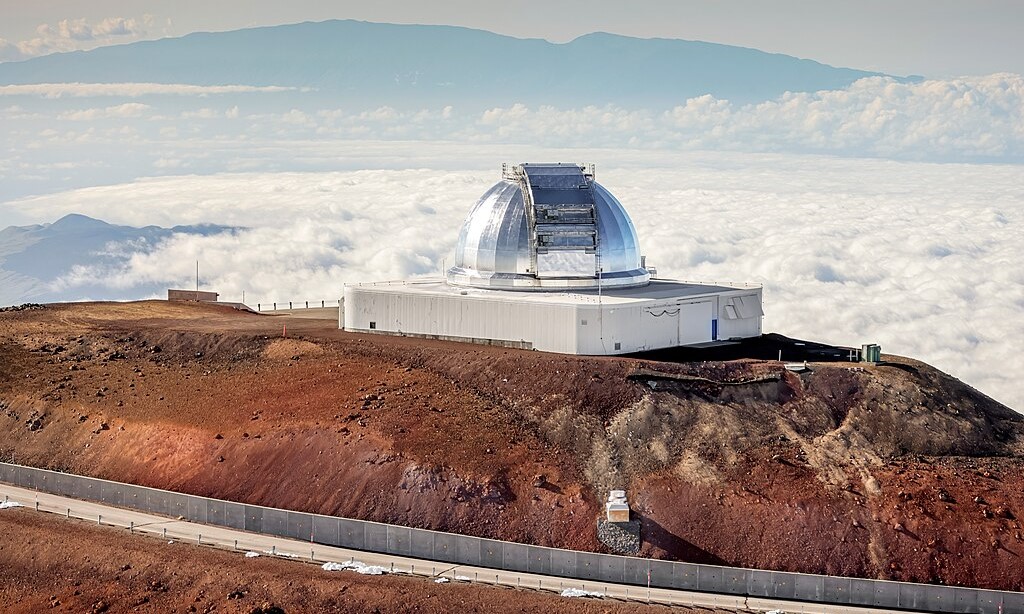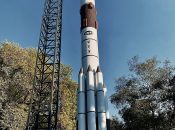An infrared telescope is a specialized astronomical instrument designed to observe celestial objects in the infrared part of the electromagnetic spectrum. These telescopes differ from optical telescopes, which capture visible light, by detecting and recording the heat or thermal radiation emitted by objects in space. Infrared astronomy has opened up a new realm of possibilities for astronomers, allowing them to study celestial bodies and phenomena that are invisible or poorly observed in visible light.
Infrared telescopes use detectors that are sensitive to infrared radiation, typically operating in the near-infrared (NIR), mid-infrared (MIR), and far-infrared (FIR) regions. These detectors can capture the faint emissions from stars, galaxies, interstellar dust, and other astronomical objects that radiate strongly in the infrared spectrum. In addition, they can peer through cosmic dust clouds, which can obscure visible light but are partially transparent to infrared radiation.
One of the primary advantages of infrared telescopes is their ability to study cooler objects in space. This includes brown dwarfs, which are often too faint to be detected in visible light, and planets or exoplanets, whose feeble glow can be obscured by the glare of their parent stars. Infrared observations have also helped identify and study distant galaxies, quasars, and protostars that emit primarily in the infrared.
Infrared telescopes have made groundbreaking discoveries in a variety of fields, from exoplanet research and the study of star-forming regions to understanding the composition of comets and asteroids. NASA’s Spitzer Space Telescope and the European Space Agency’s Herschel Space Observatory are among the most well-known infrared telescopes that have greatly expanded our understanding of the universe and continue to contribute to cutting-edge astronomical research.
Infrared telescopes are essential tools in modern astronomy, allowing scientists to explore the cosmos beyond what is visible in the optical part of the electromagnetic spectrum. By detecting the infrared emissions from celestial objects, they have unveiled hidden facets of the universe and played a pivotal role in countless astronomical breakthroughs.

NASA Infrared Telescope Facility (Wikimedia)
Here are 26 interesting facts about infrared telescope to know more about it.
- Infrared Spectrum: Infrared telescopes observe the universe in the infrared portion of the electromagnetic spectrum, which encompasses wavelengths longer than those of visible light.
- Heat Detection: Infrared telescopes detect heat or thermal radiation emitted by celestial objects, as everything with a temperature above absolute zero emits infrared radiation.
- Three Infrared Regions: The infrared spectrum is divided into three main regions: near-infrared (NIR), mid-infrared (MIR), and far-infrared (FIR), each with distinct applications.
- Transparent to Dust: Infrared radiation can penetrate cosmic dust clouds, making it invaluable for studying regions obscured in visible light.
- Cooler Object Observation: Infrared telescopes excel at observing cooler objects, including brown dwarfs, planets, and exoplanets that radiate primarily in the infrared spectrum.
- Invisible Objects: They enable the study of invisible or poorly observed objects such as black holes, dark molecular clouds, and protostars.
- Spitzer Space Telescope: NASA’s Spitzer Space Telescope, launched in 2003, revolutionized infrared astronomy by providing high-resolution infrared imagery.
- Herschel Space Observatory: The European Space Agency’s Herschel Space Observatory, active from 2009 to 2013, made significant contributions to the field, especially in far-infrared observations.
- Cosmic Microwave Background: Infrared telescopes play a crucial role in the study of the cosmic microwave background, a relic radiation from the early universe.
- Asteroid and Comet Study: They are used to investigate the composition of asteroids, comets, and other small bodies in the solar system.
- Studying Star-Forming Regions: Infrared telescopes help researchers study star-forming regions, revealing young stars hidden within dusty clouds.
- Planetary Atmospheres: They are used to analyze planetary atmospheres, including those of Earth and other planets in the solar system.
- Jovian Moons: Infrared observations have been instrumental in exploring Jupiter’s moons, detecting volcanic activity on Io and subsurface oceans on Europa.
- Exoplanet Detection: Infrared telescopes have contributed to the discovery and characterization of exoplanets through direct imaging and studying their atmospheres.
- Water Detection: They are used to detect water and water vapor in distant objects and regions of space.
- Infrared Survey: The Two Micron All-Sky Survey (2MASS) was a groundbreaking infrared survey that mapped the entire sky in the near-infrared, providing a wealth of data.
- Black Hole Observations: Infrared observations have played a role in the study of supermassive black holes at the centers of galaxies.
- Observing Galactic Centers: Infrared telescopes are crucial for observing the centers of our Milky Way galaxy and other galaxies, even when obscured by dust.
- Near-Infrared for Exoplanets: Near-infrared observations are particularly useful for characterizing exoplanet atmospheres and studying their potential habitability.
- Cold Universe Study: Far-infrared observations are vital for investigating the cold universe, including the study of molecular clouds and cold interstellar dust.
- Protostars and Stellar Nurseries: Infrared telescopes help identify and study protostars and the environments where new stars are born.
- Interstellar Chemistry: Infrared spectroscopy is instrumental in studying the chemistry of interstellar space, including the identification of complex molecules.
- Microlensing Events: Infrared telescopes are used in gravitational microlensing events to detect planets orbiting distant stars.
- Infrared as a Tool for Astronomers: Astronomers use infrared data in combination with data from other wavelengths to gain a more comprehensive understanding of celestial objects and phenomena.
- Exploring Cosmic Mysteries: Infrared telescopes have contributed to solving numerous cosmic mysteries, from understanding the formation of planetary systems to unraveling the origins of galaxies.
- Continued Advancements: Infrared astronomy continues to advance with the development of new instruments and observatories, promising even more exciting discoveries in the future.
Infrared telescopes stand as powerful and innovative tools in the field of astronomy, unlocking a hidden universe that would otherwise remain shrouded in obscurity. Their ability to capture the heat and radiation emitted by celestial objects has led to groundbreaking discoveries, from characterizing exoplanets and unraveling the mysteries of star formation to shedding light on the distant corners of the cosmos. With a rich history of space-based observatories like NASA’s Spitzer Space Telescope and the European Space Agency’s Herschel Space Observatory, and a promising future of continued advancements, infrared telescopes will undoubtedly continue to play a pivotal role in expanding our knowledge of the universe and pushing the boundaries of astronomical exploration.





